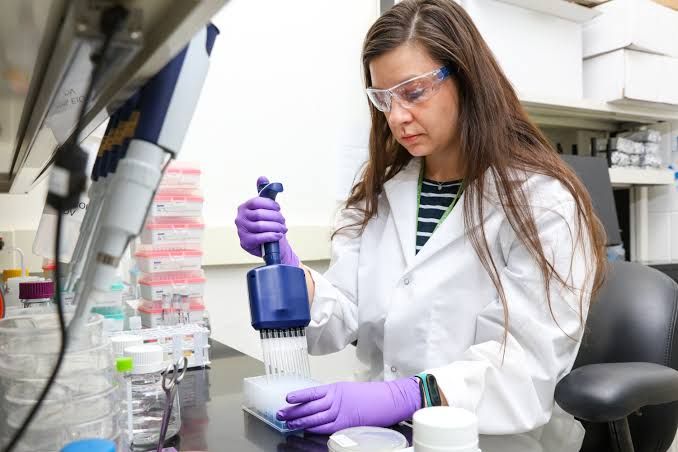
The construction of bacterial strains involves various techniques aimed at isolating specific mutants and modifying existing strains for research purposes. Below, we will explore the methods used in the isolation of sugar utilization mutants, thymine-requiring mutants, autotrophic deletion mutants, and other genetic modifications.
Isolation of Sugar Utilization Mutants
Sugar utilization mutants are bacteria that have lost the ability to utilize certain sugars due to mutations. The process typically involves:
- Selection on Minimal Media: Bacteria are grown on minimal media containing a single carbon source (e.g., glucose) and lacking other nutrients. Mutants that can utilize alternative sugars will survive while others will not.
- Screening: Colonies that grow on the minimal medium can be screened further by transferring them to media containing different sugars to identify those with altered sugar utilization pathways.
- Genetic Analysis: Once isolated, these mutants can be analyzed genetically to identify the specific mutations responsible for their altered sugar metabolism.
Isolation of Thymine-Requiring Mutants
Thymine-requiring mutants are unable to synthesize thymine and thus require it in their growth medium:
- Growth Conditions: Wild-type bacteria are grown in a medium lacking thymine. Mutants that cannot synthesize thymine will fail to grow under these conditions.
- Isolation: Surviving colonies can be isolated and further tested for their requirement for thymine by growing them on media with varying concentrations of thymine.
- Molecular Characterization: Genetic analysis is performed to identify mutations in genes involved in the biosynthesis pathway of thymidine.
Selection for Autotrophic Deletion Mutants
Autotrophic deletion mutants are those that have lost the ability to synthesize essential metabolites:
- Creation of Deletion Mutants: This can be achieved through techniques such as CRISPR-Cas9 or traditional methods like transposon mutagenesis, where segments of DNA are deliberately deleted or disrupted.
- Selection Process: These mutants are selected by culturing them on media lacking specific nutrients they can no longer synthesize due to deletions.
- Characterization: The resulting strains must be characterized biochemically and genetically to confirm their autotrophic nature and understand the metabolic pathways affected.
Strain Construction Using Existing Strains
Using existing bacterial strains as a foundation allows researchers to build upon known genetic backgrounds:
- Crossbreeding Techniques: Different strains may be mated using conjugation or transformation methods to introduce new traits into an existing strain background.
- Marker Exchange Systems: Utilizing selectable markers (e.g., antibiotic resistance genes) helps in tracking successful integrations during strain construction.
- Verification: The constructed strains need thorough verification through sequencing or PCR analysis to ensure desired traits have been successfully incorporated.
Isolating Transposon Insertions in Genes
Transposon mutagenesis is a powerful tool for gene function studies:
- Insertional Mutagenesis: Transposons randomly insert into genomic DNA, disrupting gene function and creating knockout mutants.
- Screening for Phenotypes: After mutagenesis, bacteria are screened for phenotypic changes (e.g., loss of growth on certain substrates).
- Mapping Insertions: Techniques such as inverse PCR or sequencing help determine where transposons have inserted within the genome, allowing researchers to identify affected genes.
Localized Mutagenesis
Localized mutagenesis focuses on specific regions within a genome:
- Targeted Approaches: Methods like CRISPR-Cas9 allow precise edits at defined locations within the genome without affecting surrounding sequences.
- Functional Studies: This approach enables detailed functional studies of specific genes or regulatory elements by introducing point mutations or small deletions.
Production of Phage Mutants
Phage mutants can provide insights into bacterial genetics:
- Phage Engineering: Bacteriophages can be engineered using techniques such as site-directed mutagenesis to create variants with altered host ranges or lytic properties.
- Isolation Procedures: Phages are propagated on bacterial lawns, and mutant phages can be isolated based on their ability to form plaques with distinct characteristics compared to wild-type phages.
Isolation of λ Lambda Mutants
Lambda (λ) phage is commonly used in molecular biology:
- Mutant Isolation Techniques: λ phage mutants can be isolated through selective pressure or by inducing mutations via chemical agents or radiation.
- Characterization of Mutations: The resulting λ phage variants can then be characterized based on their infection capabilities and genetic makeup.
Use of Phage to Isolate Operon and Gene Fusions
Phages play a crucial role in studying gene regulation:
- Gene Fusion Constructs: Researchers use phages as vectors for creating operon fusions, which help study gene expression under different conditions.
- Screening Strategies: By inserting reporter genes (like lacZ) into operons via phage vectors, researchers can screen for expression levels based on colorimetric assays or fluorescence.
In summary, constructing bacterial strains through various methods allows researchers significant insight into microbial genetics and physiology, facilitating advancements in biotechnology and medicine.







